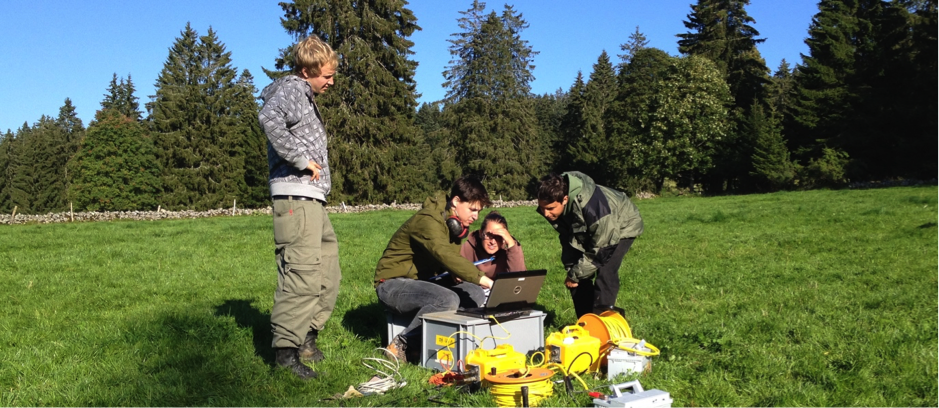Polishing the lens for sharp images of the subsurface – Improving seismic exploration of natural resources
The adverse impact of the near-surface zone on seismic data is one of the long-standing problems in seismic exploration of hydrocarbon and geothermal reservoirs. The research conducted in the framework of the ETH-based industry-financed CARNEVAL consortium aims at providing new solutions to improve seismic reservoir imaging in challenging environments.
Seismic methods are the techniques of choice for exploring the subsurface and to image hydrocarbon and geothermal reservoirs because they offer the highest resolution at depth compared to any other geophysical exploration methods. But due to its complexity and heterogeneity, the Earth’s near-surface zone (upper 10’s – 100’s of m) has a significant adverse impact on seismic data recorded on the land surface potentially leading to severely distorted subsurface images. Being able to remove or correct for the distortions caused by the near-surface zone is clearly a goal of the highest priority to the exploration-seismic industry. Yet, the near-surface zone is often only poorly characterized and understood.
The over-arching goal of the ETH-based industry-financed CARNEVAL consortium (industry partners are Nagra, OMV, and Schlumberger Gould Research) is to solve for long-standing problems in surface-seismic exploration related to the near-surface zone. The research strategy of the consortium activities includes:
- Investigating different near-surface types using various geophysical methods
- Understanding the impact of the near-surface zone on seismic wave propagation
- Developing tools for removing near-surface distortions
The CARNEVAL research is problem-driven and field-data based focusing on integrating existing methods and developing emerging methods.

The ESC member involved in this project is Prof. Johan Robertsson, Professor of Applied Geophysics.
The Exploration and Environmental Geophysics (EEG) Group is investigating all areas of applied geophysics from acquisition to processing, modelling and inversion for exploration and environmental problems.